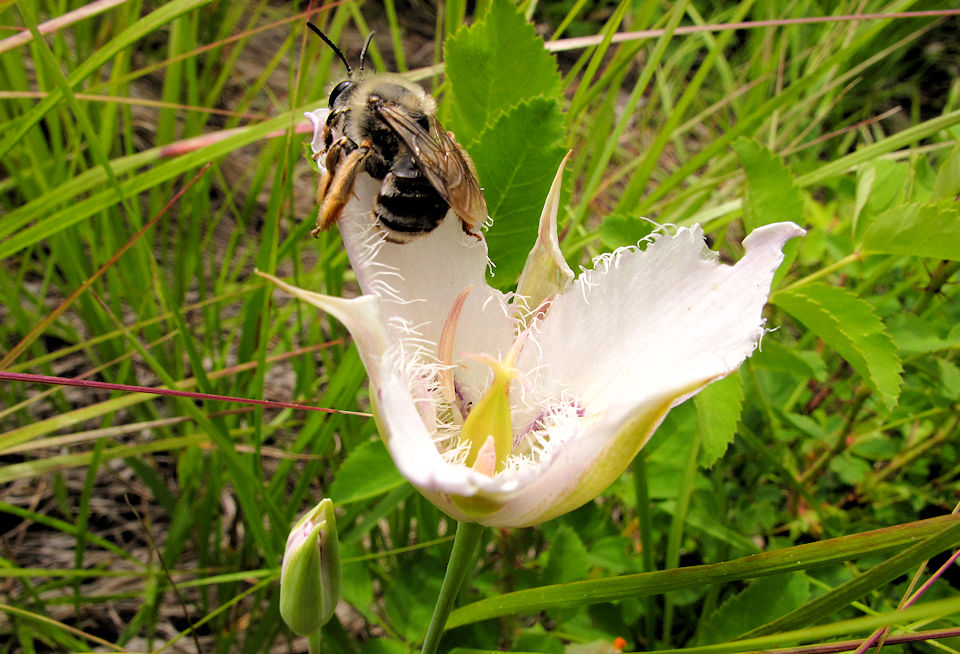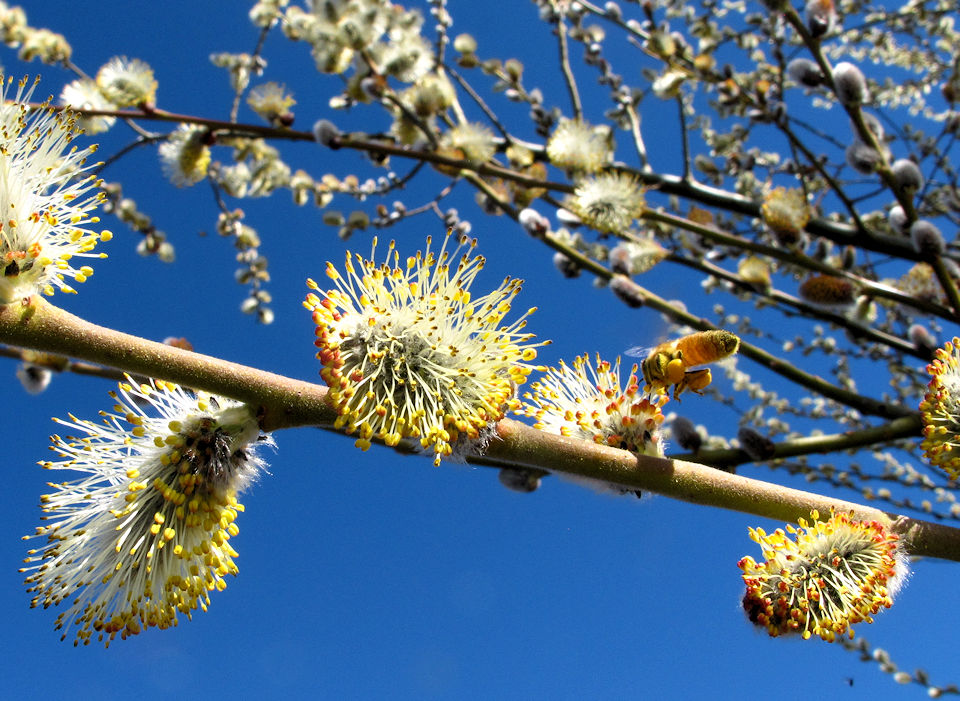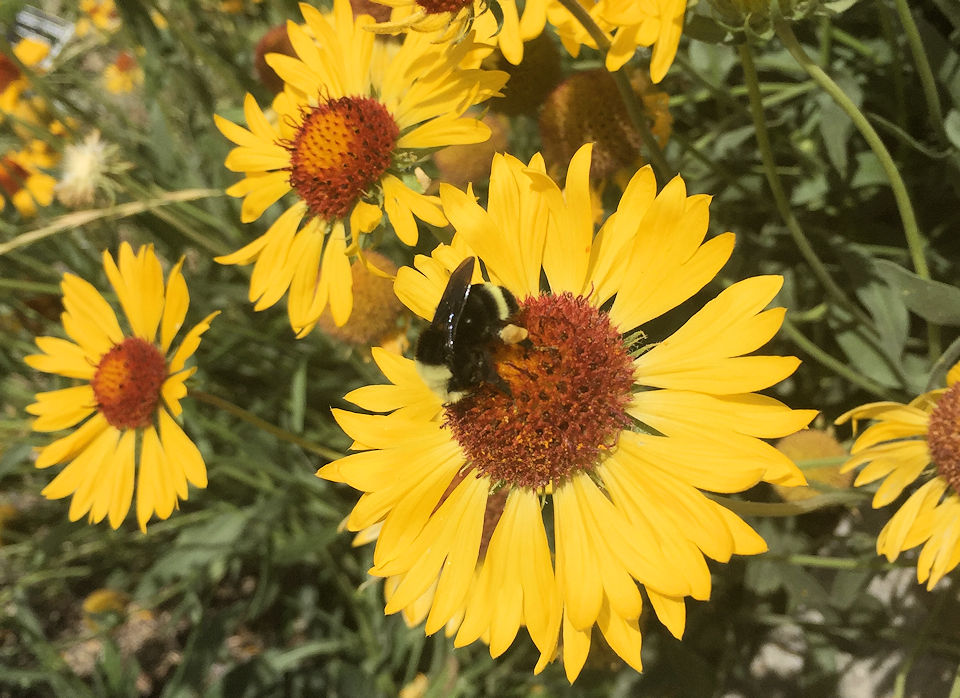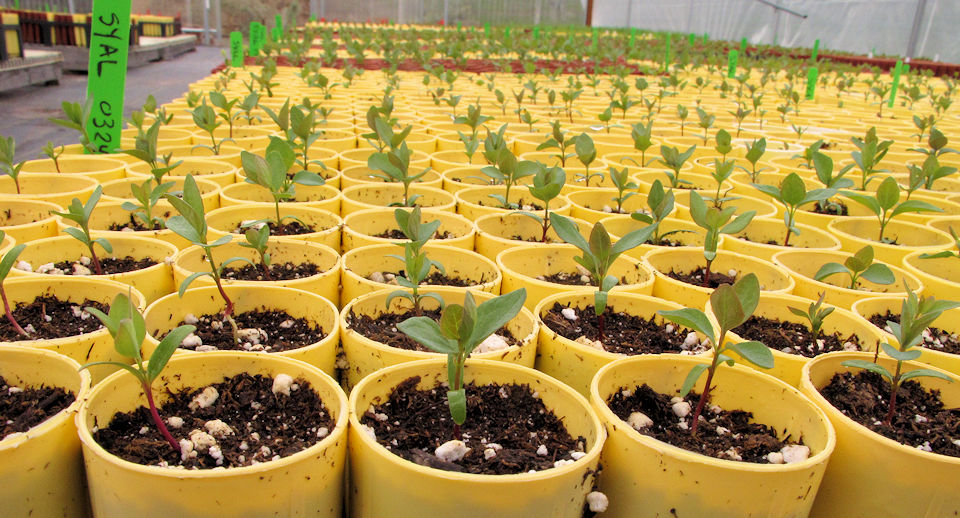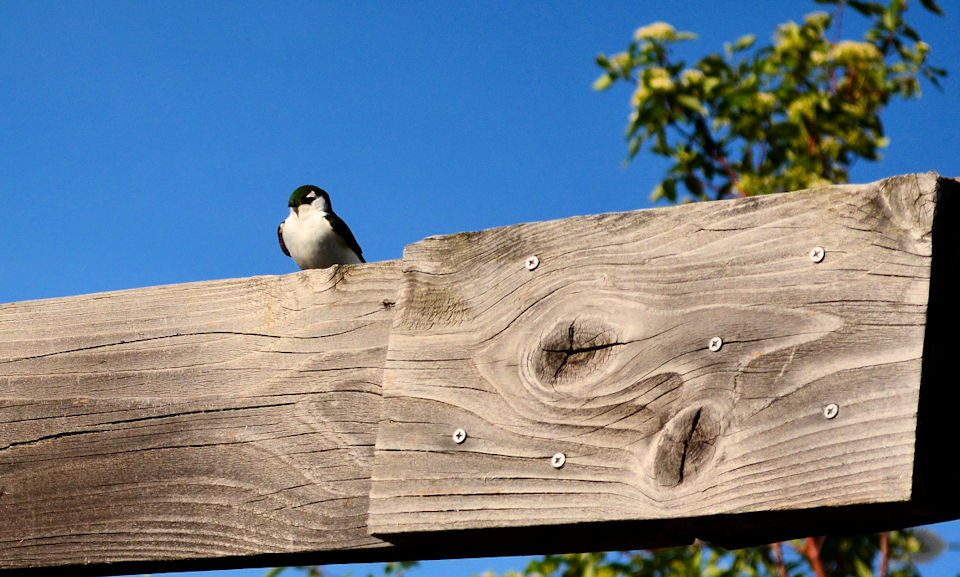The best native plants for native bees
A leafcutter bee on a native mallow flower
We are in the midst of National Pollinator Week (did you know?) and it seems most appropriate as every day I’m seeing many species of native bees on the native flowers in the nursery. I often listen to podcasts as I water plants, a daily task in a nursery, and a recent favorite is “PolliNation” (thank you, Lisa R.!), produced at Oregon State University. On a recent podcast the bee taxonomist with the Oregon Bee Project, Lincoln Best, listed his top native plant species to benefit native bees, most of which I share below.
A longhorned bee exiting a flower of Lyall’s mariposa lily (Calochortus lyalli)
Native bees are either generalists, visiting many flower species of varied flower types (most bumble bees), or specialists, requiring just one or a few species to complete their life cycle. Unlike the imported honeybee, with which all of us are familiar, native bees (which number close to 700 species in Washington state), are mostly solitary and have an adult stage which may last for only a few weeks. They need pollen and they need it now! Our native bees co-evolved with our native flora and many are dependent on select plant species.
A honeybee loaded with abundant pollen from Scouler’s willow (Salix scouleriana)
This list of recommended natives was chosen to benefit both the generalists and specialists, and to provide an extended bloom time. They are not listed in order of absolute importance, although for some bee species they are absolutely important. A basic rule applies: a greater diversity of native plants (height, bloom time, floral type, etc.) leads to greater diversity of fauna, including bees and much more (butterflies, birds, predatory insects, etc). Plants grown at Derby Canyon Natives are in bold.
- Phacelia, aka scorpionweed, for the shape of the inflorescence. One of the best, for both generalists and specialists. We grow Phacelia hastata.
- Astragulus, aka locoweed or milkvetch
- Ericameria – rabbitbrush, two species. A great late season source of pollen and nectar, blooming in September and October
- Cirsium, the thistles
- Helianthus, the sunflowers, and relatives like balsamroot (Balsamorhiza), mule’s ears (Wyethia) and blanketflower (Gaillardia)
- Solidago, or goldenrod
- Grindelia, the gumweeds
- Penstemon, penstemons or beardtoungues – spring and even summer bloomers, so many to choose from!
- Cryptantha and Hackelia, from the Borage family
- Oenothera, the evening primroses – we grow five species
- Vaccinium (huckleberries) and relatives in the Ericaceae family like kinnikinnick (Arctostapylos uva-ursi)
- Lysimachia, including starflower and native yellow loosestrife
- Potentilla, the cinquefoils and relatives, like shrubby cinquefoil (Dasiphora fruticosa)
- Malvaceae – the mallow family, including orange globemallow (Sphaeralcea munroana) and streambank globemallow (Iliamna rivularis)
- Salicaceae – the willows. Lots of pollen, objective #1 for native bees
- Calochortus – mariposa or sego lily
- Peritoma serrulata – the Rocky Mountain beeplant. A spectacular summer blooming annual, 4′ tall and wide, the only annual we grow
- Stephanomeria – wirelettuce, a summer bloomer from very dry places
A bumblebee busy with the flowers of Phacelia hastata; this is one of many bumblebees that seek out this plant within the many other plants growing in this hoophouse
A bumblebee squeezing into a spring blooming penstemon
The Rocky Mountain beeplant (Peritoma serrulata) a summer blooming bee magnet
Another bumblebee species on the long blooming blanketflower, Gaillardia aristata

